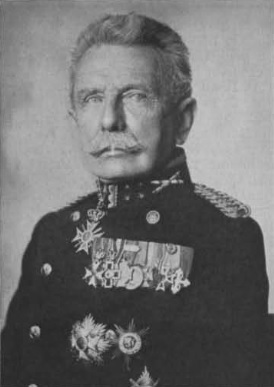Criteria
All soldiers participating in the First Aceh Expedition and/or the first six months of the Second Aceh Expedition were entitled to the medal under Royal Decree No. 9 of May 12, 1874. Officially this was called the Aceh Medal 1873–1874, but as the purpose of the operation was to take the Kraton, the medal is also known as the Kraton-medaille.
Recipients of the Aceh medal were also entitled to the Expedition Cross with Atjeh 1873–1874 clasp. This provision in the Royal Decree of April 24, 1875 is contrary to the Dutch rule that no more than one medal may be awarded for a single event.

The Aceh War, also known as the Dutch War or the Infidel War (1873–1904), was an armed military conflict between the Sultanate of Aceh and the Kingdom of the Netherlands which was triggered by discussions between representatives of Aceh and the United States in Singapore during early 1873. The war was part of a series of conflicts in the late 19th century that consolidated Dutch rule over modern-day Indonesia.

Joannes Benedictus "Jo" van Heutsz was a Dutch military officer who was appointed governor general of the Dutch East Indies in 1904, years after he had become famous for bringing to an end to the long Aceh War.

In the Dutch honours system, most orders are the responsibility of ministers of the Netherlands Government. The house orders, however, are awarded at the discretion of the Dutch monarch alone.

The King Albert Medal was a Belgian medal established by royal decree on 7 April 1919 and awarded to both Belgians and foreigners who were exceptionally meritorious in promoting, organising or administering humanitarian and charitable work that assisted Belgians in need during the First World War.

Baiturrahman Grand Mosque is a mosque located in Banda Aceh, Aceh, Indonesia. The Baiturrahman Grand Mosque is a symbol of religion, culture, spirit, strength, struggle, and nationalism of the Acehnese people. The mosque is a landmark in Banda Aceh and has survived the 2004 Indian Ocean earthquake and tsunami.
The Honorary Medal for Charitable Assistance was created at 18 June 1822 and is after the Military William Order the oldest decoration for bravery in the Kingdom of the Netherlands. Furthermore, the Honorary Medal is the highest civilian decoration still being awarded for bravery, and is specifically for those who carried out a voluntary act of bravery or self-sacrifice, with an emphasis on charity.

De Ruyter Medal was created by royal decree no. 1 on 23 March 1907 by Queen Wilhelmina of the Netherlands, on the three hundredth birthday of Admiral Michiel de Ruyter

Henri Karel Frederik van Teijn was a Dutch general, knight and officer in the Military William Order, civil and military governor of Aceh and Dependencies.

'Theodoor Johan Arnold van Zijll de Jong was a Dutch Lieutenant General and commander of the Royal Netherlands East Indies Army
Jhr. Johan Cornelis van der Wijck was a Dutch lieutenant general of the Royal Netherlands East Indies Army (KNIL) and governor of Aceh and related territories.

George Frederik Willem Borel was a major general in the Netherlands, notable for his involvement in the Banjarmasin and Aceh Wars.
The Expedition Cross officially known as the Cross for Important Military Operations was a military decoration of Kingdom of the Netherlands. Created by royal decree on 19 February 1869, by King William III, the cross was awarded for participation in major military operations between 1846 and 1942.

The Political Prisoner's Medal 1914–1918 was a Belgian medal established by royal decree on 26 December 1930 and awarded to Belgian civilians who were detained for a minimum of one month by the Germans during the First World War following an act of courage or devotion towards the Allies' cause.

Johannes (Jan) van Swieten was a Dutch General and politician.

The Atjeh Tram was a railroad line in Aceh, on the island of Sumatra. It was built from 1874 by the Military engineering section of the Royal Netherlands East Indies Army. Originally a loop for the port of Oleh Leh, it was rebuilt as a route for the transport of military goods stretching from Ule Lheu to the port of Pangkalan Susu in the Sultanate of Langkat. The line was 511 kilometers (318 mi) long, with 120 stops and stations along the way. It was finished in 1917. During the Aceh War the railroad proved of great importance for the quick transportation of troops and material.

The Samarang class was a class of steam screw gunvessels of the Royal Netherlands Navy. The class originally comprised Samarang, Batavia and Makassar, but was later extended.

The Pontianak class was a class of steam screw gunvessels of the Royal Netherlands Navy.

Cornelis Jacobus Snijders was a Dutch military leader. He was Commander-in-Chief of the Armed Forces of the Armed Forces of the Netherlands during World War I.

Staatsspoorwegen was a state-owned railway company managed by the Dutch East Indies colonial government. It was absorbed into the present Kereta Api Indonesia after Indonesian independence in 1945. The main competitor was Nederlandsch-Indische Spoorweg Maatschappij (NIS) as private-owned railways company which had standard gauge and cape gauge lines.

The 12 cm K.A. was a Dutch fortress, siege and naval rifled bronze breechloading gun. In the Dutch army it was called Kanon Brons getrokken van 12 cm K.A.. In the Dutch navy: Kanon van 12 cm A No. 2. It was produced in substantial numbers in the Netherlands. There were also steel and steel bronze versions.
This page is based on this
Wikipedia article Text is available under the
CC BY-SA 4.0 license; additional terms may apply.
Images, videos and audio are available under their respective licenses.

















